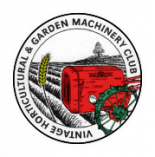Forum Replies Created
-
AuthorPosts
-
June 12, 2015 at 4:44 pm #13419
 hillsiderParticipant
hillsiderParticipantIf I understand the situation correctly the washer is free to move so does not stay alinged when you turn the clutch on its side to fit it. I presume we are talking about a Briggs and Stratton unit here?
My solution to this would be to turn the clutch over so that you can see into the threaded hole, line up the washer using a round object then squeeze the rotating section of the clutch hard against the threaded portion with your hand. Hopefully this will keep the thrust washer in place while you feed the unit over the crankshaft extention. The clutch should then be easily screwed into place.
June 7, 2015 at 8:45 am #13313 hillsiderParticipant
hillsiderParticipantTry cleaning the points with a fine abrasive strip before replacing them, there is probably a layer of oxide formed on the contact faces that is preventing them from sparking, it works most times that I have tried it.
Re the plunger unless it is damaged or badly worn just check that it moves freely in the hole that it is located in they can become stuck or even seized by dry lubricant.May 12, 2015 at 5:31 pm #13034 hillsiderParticipant
hillsiderParticipantYou may struggle to find a source diamond pattern Chequer plate, I am sure it was discontinued many years ago in favour of the five bar pattern Durbar plate that you have probably found already.
The only places that I can think of that may help is either a ship repair yard or a ship breakers as it was commonly used for deck plates in engine rooms.April 26, 2015 at 11:41 am #12746 hillsiderParticipant
hillsiderParticipantThank’s for the tip off re Paul I shall send him a message.
Ray.April 26, 2015 at 9:08 am #12741 hillsiderParticipant
hillsiderParticipantThank you Stuart for your thoughts re the Versatiller, judging by the diameter of the bearing housings I would go along with the needle bearing theory and like you I suspect that the seal arrangement is contained in the press fit steel caps that also form a shield on the ends of the bearing housing.
However as the machine is not mine and the owner rather likes it I am not intending to get into a situation where the machine becomes beyond repair until such time as the oil leakage becomes intolerable. Since my first posting I have tried removing the seal caps in the hope that maybe they contain a standard lip seal but they are very tightly fitted and to carry on with this route would probably have destroyed the seal casings.
During my investigations I did notice that some oil was leaking from the joint between between the two halves of the chaincase, the cause of this was that most of the bolts and nuts were slack so hopefully tightening these will help to reduce the leakage.If all else fails there is always the option of removing the oil that is in there and refilling with a semi fluid grease.
April 23, 2015 at 8:52 pm #12712 hillsiderParticipantJanuary 15, 2015 at 6:39 pm #11452
hillsiderParticipantJanuary 15, 2015 at 6:39 pm #11452 hillsiderParticipant
hillsiderParticipantYou pose an interesting question there, it all depends on the expected loads that would be applied. For instance is the winch intended to be used in anger or just for display purposes, If not spring steel then certainly a decent grade of steel would be needed not just flat black bar, bearing in mind that the band will need to be rolled into shape and drilled for end fixings and rivet holes.
Have you by any chance checked to see if the original winch manufacturer is still around? Alternatively you could try talking to the company linked here.
January 12, 2015 at 10:56 am #11429 hillsiderParticipant
hillsiderParticipantVery good point about using the correct type of oil to suit the engines lubrication system. That was the reason for asking what the originaly recomended oil was along with its specification.
It would have been all to easy to say use a 15/40 Detergent oil like most diesels can use, but from what I have seen of them the Drayton engine is not like most modern engines.
I would agree with the recommendation to consult the folks at Morris lubricants I to have found them to be very helpful.Ray.
January 10, 2015 at 10:22 pm #11415 hillsiderParticipant
hillsiderParticipantI have couple of old oil company cross reference books tucked away, If you post the recommended oils and grades and any specification numbers on here I shall then check to see if they are listed and can then be translated to a modern brand.
January 5, 2015 at 12:48 pm #11340 hillsiderParticipant
hillsiderParticipantMine arrived safely on Saturday also, thank you.
Ray.
December 22, 2014 at 9:40 pm #11166 hillsiderParticipant
hillsiderParticipantYou are not dreaming re the Orange colour, Epco jacks were usually that colour. I have not seen a jack exactly like the one in your pics but I have seen jacks where you have the normal pumping stroke on the handle to raise the plunger but to lower it you go to the bottom of the stroke where you then push the handle harder to overcome a strong spring to move the jacking pump into the lowering position.
Alternatvely the pump handle is shaped to form a key that engages with the lowering valve when it is rotated in it’s socket or even pushed in and rotated.Good luck with the load testing.
November 16, 2014 at 9:26 am #10718 hillsiderParticipant
hillsiderParticipantI think the text below that forms a part of the OLC profile of the Allen Scythe is a good enough reason for the Allen to be featured on the front of their magazine.
Quote:-
The Allen Scythe is one of those odd machines that does not easily fit into a specific category. Although designed for cutting grass, the Allen Scythe was not a lawn mower in the strictest sense because its main use was to cut rough and long grass on verges and in fields, orchards and rough ground. Nonetheless, it does hold a special place in the history of the mower and many enthusiasts have an example in their collection.
End of quote.My thinking is that love it or loathe it the Allen Scythe is on of those machines that sits happily in two camps, Horticultural and Garden Machinery as far as collectors are
concerned.November 15, 2014 at 6:32 pm #10708 hillsiderParticipant
hillsiderParticipantThe Allen Scythe may not be a lawn mower in the strictest sense but it it is old and it cuts grass.
November 12, 2014 at 6:30 pm #10666 hillsiderParticipant
hillsiderParticipantThe most likely location for the engine numbers is stamped onto the side adjacent to the carb or the end near the spark plug of the recoil start housing
You should find a Model,Type and Code number under the paint or in some cases rust so be prepared to give the area a clean with some fine emery cloth.
Ray.October 23, 2014 at 10:04 pm #10470 hillsiderParticipant
hillsiderParticipantRe choosing oils for use in Engines and oil change frequency I go along with Wristpins wise words re choosing the grades to use. If the engine manufacturer has done their job correctly and (and most do) the handbook will contain a list of oil grades and specifications that are suitable for use in the engine. If this advice is followed then the cost of using a good quality oil will be repaid in engine life.
Re using the handbook from a different engine manufacturer to the one that information is saught for is a bit of a lottery and not something that I would advise, even if they do look similar they may have differring needs.
-
AuthorPosts
